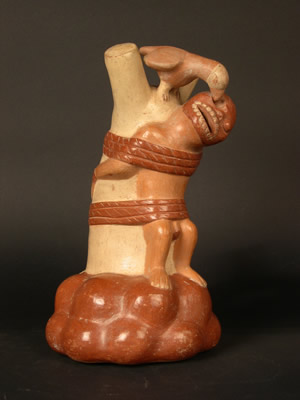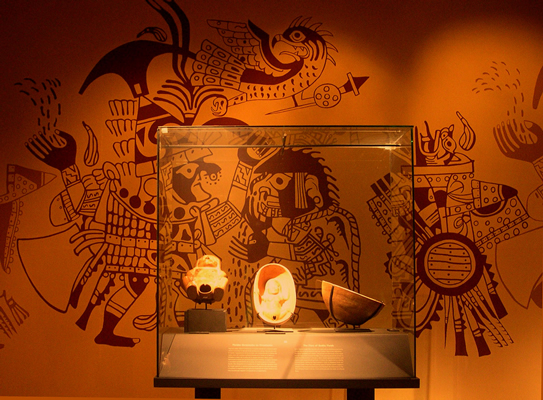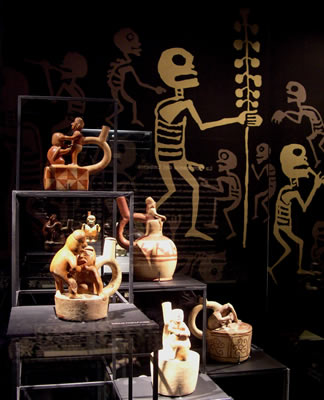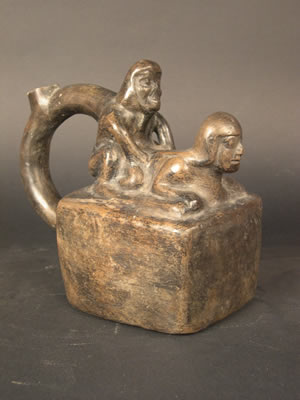This exhibit displayed a hundred pieces from the Moche culture loaned by the Larco Museum in Peru to explore the theme of sexual representation in the cosmovision of this pre-Hispanic society of the Peruvian coast. The curation of the exhibit was based on a recent study conducted by Dr. Steve Bourget that analyzed the large number of sexual representations in objects attributed to the Moche people, concluding that in this society—as among other ancient peoples of India, Africa and Asia—sex played a symbolic role that was directly related to death, sacrifice, and especially political power. As the leaders of this society were seen to be responsible for agricultural fertility, the abundance of marine resources and even the very existence of the Moche people, sexual acts and their representation on ceramic objects, textiles and murals performed the function of ensuring succession, avoiding danger and preventing natural and social catastrophes that could lead to the death of the current ruler.
The sexual images we see in this exhibit are not illustrations of daily life in Moche society; neither can their interpretation be based on the ideas and values of our own society. Rather, their message must be deciphered from the particular context of the Moche world. We invite you to visit this other world, a world that existed along the arid Andean coast almost two thousand years ago, and to understand the role played by sexual imagery in a vanished American society.
The Moche inhabited the valleys of the arid northern coast of Peru from the II to the VIII Centuries of our Era. They built large cities with monumental pyramids, residential zones for the elite, workshops for the production of handicrafts, sprawling settlements for commoners and numerous cemeteries. Their economy was based primarily on irrigation agriculture, but also depended on the exploitation of marine resources and participation in vast exchange networks. War was an important part of Moche society.
The Moche State was governed by a powerful ruling class that combined secular authority with key ritual and military functions. To stay in power, the elite created a complex ideology that was materialized in massive temples and places of worship, where ceremonies involving elaborate symbols and objects were performed. Lacking a writing system, Moche craftspeople depicted in ceramic, metal, textile and mural paintings the rites, legends, and values of the ruling elite, which glorified the use of force, violence and domination. Their works of art were characterized by a striking realism, and many of them were devoted to perpetuating the governing authority, an outgrowth of a political ideology with a marked emphasis on the male gender.
For the Moche people, their Ruler was the fertility of the earth incarnated. When the ruler died, this capacity was lost and the earth passed through a period of instability in which natural disasters, scarcity or great plagues may have occurred, devastating the entire society. The deceased dignitary then departed on a journey that took him from the World of the Living to the World of the Dead, and from there to the World of the Ancestors. During this journey he was the subject of numerous rituals, the purpose of which was to return his life-giving capacities. Sexual activity was a central element of these ceremonies. After spending some time in the afterlife, the deceased Ruler “returned” to the World of the Living reinvested with fertility, thereby ending the plight of his subjects, and reigning for a new period.







































